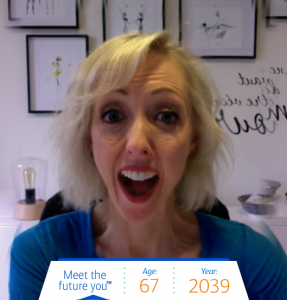Ahhhh. Statements of Advice. SoAs.
Those wonderful documents that we love to hate. They’re an important part of communicating advice to clients, as well as a ticket to the “nice list” with your compliance team.
But in 2016, SoAs are still largely Word or PDF documents, filled with graphs and number-filled tables, produced by financial planning software.
So let’s think outside the box a little, and consider what an SoA could be.
One that’s focused on the clients’ needs and outcomes; is almost fun to produce; and that still gets the thumbs up from your compliance team.
More pictures, less graphs
You’ve heard the quote.
“A picture speaks a thousand words.”
But we mostly fill our SoAs with lengthy paragraphs, graphs and tables. Not exactly the most exciting stuff around.
What if SoAs included photos and artifacts related to the people that the advice was designed to help?
In many cases, it’s not just the people seeking the advice that will benefit from it.
It’s their children, with the experience of private school education and travel.
And perhaps their parents, knowing they can be supported in their older years.
In Daniel Crosby’s Laws of Wealth (p.65), he cites a study by Cheema and Soman that found “earmarking savings in an envelope labeled with a picture of a couple’s children nearly doubled the savings rate of very low income parents.”
That’s quite a powerful impact for the simple addition of some photos of the people and things that are important to the clients.
So including photos of your client’s immediate and extended family; a clipping of their dream home; or a hand drawn picture by their 3-year-old of the dog she desperately wants when they get their own backyard, is a relatively easy way to humanise and pull in the incredible power of your client’s “why”.
Kim Payne and family on holiday in Bali
Get it online
At the moment we seem to be stuck in a world of Word documents for formally presenting advice. Some practices get fancy with PowerPoint, but that can sometimes lead to talking at your clients about advice, not with them.
Imagine each SoA as a private individual webpage.
Perhaps it is incorporated into a larger client portal, but it lives online.
It’s not static. It’s interactive. It can be accessed anywhere with an internet connection, and it’s as simple to navigate as a click and a scroll.
There’s no printing or binding.
Images can easily be included.
Videos can be embedded.
Less important bits can be minimised with + and – toggles to expand and contract different sections.
You can track when your client has viewed the document and what sections they have spent most of their time reading.
And you can get sign-off and payment right from within the software.
The reality is, there are tools like Qwilr that can help you create something like this right now.
Add to that an API that connects it with your planning software, and it could make producing an SoA streamlined and fast, as well as create an engaging experience for your clients.
Video
Sometimes it’s easier to explain something verbally than attempt to write it down.
And sometimes it’s easier to explain something once, record it, and reuse it wherever it’s needed.
That’s where video can enter the picture and make the SoA production process quicker and perhaps even a little fun, for both you and your client.
Say you’re trying to explain what critical illness cover is.
It’s a conversation you’ve had many times before.
Using a professionally produced short and engaging video, may be more likely to be consumed than your typical PDF fact sheet that just gets filed with the rest of the paperwork.
That’s better for you and better for your client.
And how about creating a customised video for each client to summarise your advice in laymen’s terms, and highlight the next steps and action items?
Embed it at the beginning of your online SoA, and all of a sudden that Word document with fancy formatting isn’t looking so flash any more.
Virtual and augmented reality
Virtual reality (VR) is here. Augmented reality (AR) is here.
Imagine if we could bring the gamification of the AR based game, Pokemon Go, to financial advice.
What a way to get a nation interested in their money; spending and earning wisely; and saving for the future.
There’s also already widely accessible technology to show how we might age. The Bank of America use software to do just that with their Face Retirement website
Kim Payne at age 67 (Ahhhhh scary)
It’s a tool that can help your clients feel empathy for their future selves, and potentially make them more serious about taking action to save for their retirement.
A picture of their “older self” next to their retirement strategy, might be just the trigger they need.
It’s exciting to see technology expand the potential for what and how we present financial advice.
What do you think?
What do you imagine the SoA of the future looks like?




Enjoyed this Kim.
Appreciate the comment Norm. Thank you!
Brilliant article Kim. Great work 🙂
Thanks heaps Ron! Such a huge opportunity to really connect with clients.